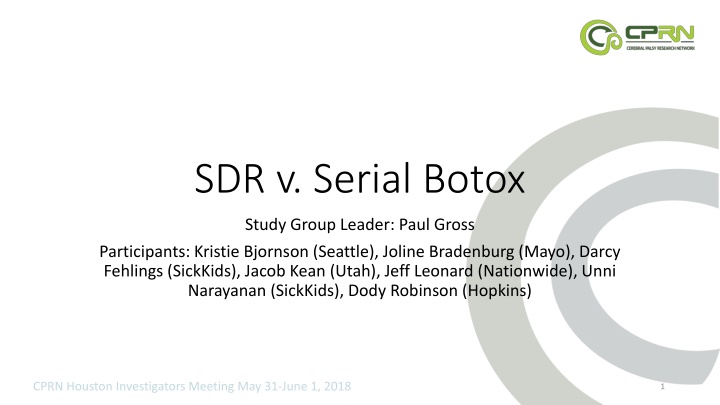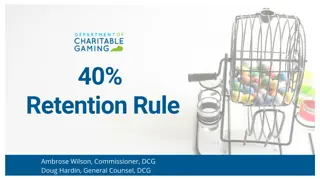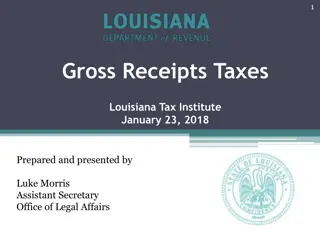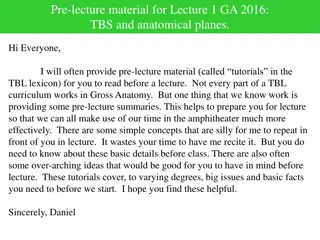
Dynamic Treatment Regimes Analysis for Spasticity Management
This study focuses on evaluating patient characteristics and interventions to determine the best outcomes in spastic diplegics. Through qualitative interviews and dynamic treatment regime analysis, the research aims to understand practice variations in spasticity management for diplegics in the U.S. The methods include examining the effects of Botox, physical therapy, selective dorsal rhizotomy, and other interventions on patients' outcomes. By incorporating randomized and non-randomized trial designs, the study seeks to provide insights into personalized medicine in rehabilitation for improved treatment strategies.
Download Presentation

Please find below an Image/Link to download the presentation.
The content on the website is provided AS IS for your information and personal use only. It may not be sold, licensed, or shared on other websites without obtaining consent from the author. If you encounter any issues during the download, it is possible that the publisher has removed the file from their server.
You are allowed to download the files provided on this website for personal or commercial use, subject to the condition that they are used lawfully. All files are the property of their respective owners.
The content on the website is provided AS IS for your information and personal use only. It may not be sold, licensed, or shared on other websites without obtaining consent from the author.
E N D
Presentation Transcript
SDR v. Serial Botox Study Group Leader: Paul Gross Participants: Kristie Bjornson (Seattle), Joline Bradenburg (Mayo), Darcy Fehlings (SickKids), Jacob Kean (Utah), Jeff Leonard (Nationwide), Unni Narayanan (SickKids), Dody Robinson (Hopkins) CPRN Houston Investigators Meeting May 31-June 1, 2018 1
AIMS & Hypotheses (History) Borne out of the NIH Workshop focus on needing more comparative effectiveness research Originally: Determine what patient characteristics and interventions lead to the best outcomes (PCORI 1) Revised: What patient characteristics and interventions lead to the best outcomes in spastic diplegics (PCORI 2) Current: Which patient characteristics and spasticity interventions lead to the best outcomes in diplegics (Study 1R3) Sub topic: Characterize the practice variation in spasticity management for diplegics in the U.S. 2
Methods Document Practice Variation Qualitative interview of medical discipline leaders in spasticity management (clinics where existing) fpr diplegics Open ended interview questions on neurotoxins, selective dorsal rhizotomy, intrathecal baclofen pumps and orthopedic interventions Vignettes to capture spasticity management plan Recorded interviews Will be transcribed, coded and analyzed May follow-up with a close ended survey 10-15 Centers across U.S. 3
Methods Dynamic Treatment Regimes Analysis for treatments that are tailored to a person s dynamic state If, then, otherwise Personalized medicine (rehabilitation medicine) Botox + PT SDR + Intensive PT PT Botox + PT Botox + PT Botox + PT PT 4
Methods Dynamic Treatment Regimes Randomized = Sequential, Multiple Assignment, Randomized Trials (SMART) Non-randomized Analyses structured to emulate a randomized study Control of time-varying and time-invariant covariates that could bias outcomes A note on causal inference from non-randomized studies When compared, randomized and nonrandomized studies are largely concordant When discrepant, newer methods address discrepancies An RCT-only mindset is easy but incorrect; the literature says otherwise 5
Population, Sample Size, Importance Spastic digplegics at point of indication for surgical intervention Most likely inclusion at 4-6 years of age Sample size TBD on outcome measure Addresses a core question in Research CP R2: Which interventions lead to the best outcomes. Target funding mechanism: New NIH Funding Opportunity Announcement for observational trials 6
Call to action Help Paul schedule interviews with spasticity management clinic leaders in PM&R, neurosurgery, and orthopedics in your institution! 7






















